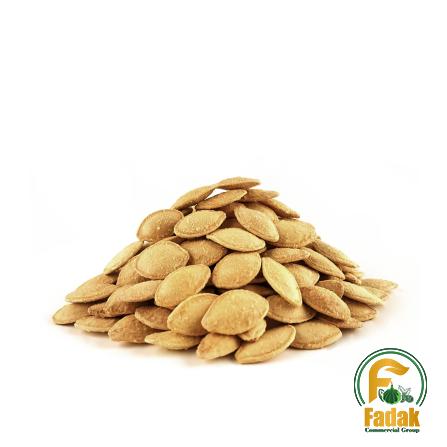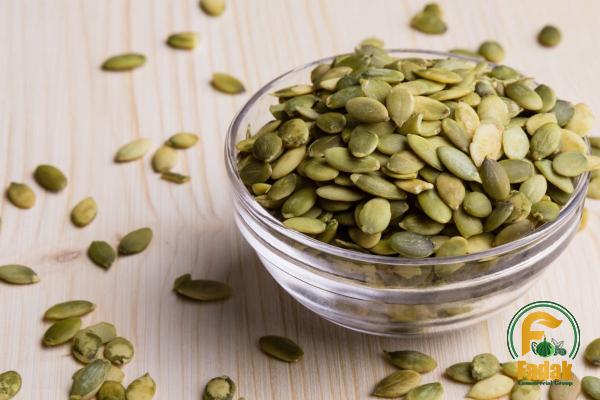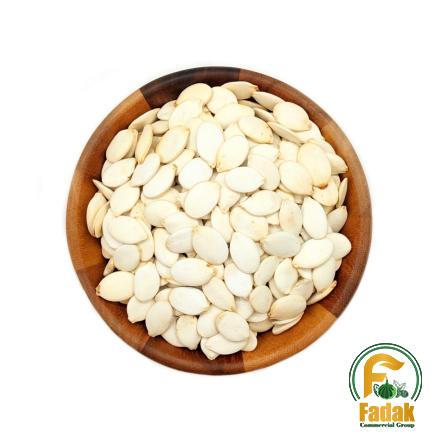Generally almond is divided into two types in the term of taste: sweet and bitter. In light of the fact that a significant number of individuals probably are not aware of the distinctions that can be made between bitter almonds and sweet almonds. Both in terms of the shape and appearance of the nuts as well as the qualities and advantages that come with consuming either variety, this post will make an effort to explain these distinctions in a more general sense. The almond tree is a tiny tree that can grow to a height of between 4 and 10 meters. The blossoms of sweet almond trees are typically white, while the blossoms of bitter almond trees are frequently pink in color. These two types of almonds have an appearance that is comparable to one another, with the primary distinction being that bitter almonds are significantly smaller in size compared to sweet almonds.  In addition to their delicious flavor, sweet almonds can be utilized in a variety of ways. These include eating the seed itself, utilizing the almond’s oil, which is stable in nature and is typically utilized in cooking and food preparation, and making use of the almond’s flour, which is nearly devoid of carbohydrates and gluten. In addition to this, it can be utilized as a meal supplement for those individuals who adhere to particular dietary regimens. But bitter almond oil is of a different character and is most commonly used as an essential oil. Due to the presence of harmful compounds in it, it should be avoided as much as possible, and it is most commonly used for medicinal and therapeutic purposes. The various applications for both sweet and bitter almond oil When it comes to the treatment of the skin and overall appearance, these two oils couldn’t be more different from one another. The use of sweet almond oil as a moisturizer and emollient is highly recommended for people who have dry or sensitive skin.
In addition to their delicious flavor, sweet almonds can be utilized in a variety of ways. These include eating the seed itself, utilizing the almond’s oil, which is stable in nature and is typically utilized in cooking and food preparation, and making use of the almond’s flour, which is nearly devoid of carbohydrates and gluten. In addition to this, it can be utilized as a meal supplement for those individuals who adhere to particular dietary regimens. But bitter almond oil is of a different character and is most commonly used as an essential oil. Due to the presence of harmful compounds in it, it should be avoided as much as possible, and it is most commonly used for medicinal and therapeutic purposes. The various applications for both sweet and bitter almond oil When it comes to the treatment of the skin and overall appearance, these two oils couldn’t be more different from one another. The use of sweet almond oil as a moisturizer and emollient is highly recommended for people who have dry or sensitive skin.

As a result of the fact that it is composed of protein, vitamins, and minerals, not only does it have a profoundly restorative effect on the skin, but it also has a significant market share in the massage oil industry. The characteristics that set bitter almonds apart from sweet almonds are as follows: However, due to the presence of toxic substances in bitter almond oil, it is not recommended for use directly on the skin. Instead, bitter almond oil is most commonly utilized in the production of fragrances and cosmetics like perfumes and colognes, soaps and lotions due to the lubricating properties it possesses as well as its wonderful aroma. Takes. On the other hand, due to the numerous medicinal characteristics that it possesses, such as anti-cancer, weight reduction, anti-bacterial and anti-fungal, sedative, etc., bitter almond oil has a wide variety of applications in the field of medicine. Conclusion The use of sweet almond oil in skin care products is appropriate since it is a stable oil that is a great moisturizing agent and ideal for dry skin as well as skin that is sensitive.  Because of its strong scent, bitter almond oil is most commonly employed in the fragrance industry as a lubricant in the manufacturing of cosmetics such as soaps, lotions, and other similar products. The majority of applications for sweet almonds include food preparation and cooking, as well as dietary supplements. Bitter almonds are most commonly employed in the production of cosmetics and other health goods, as well as in the flavoring industry and in medical applications due to the medicinal capabilities that they possess. The contrast between sour almonds and sweet almonds lies on their respective levels of The almond tree is a very tiny tree that can reach a height of between four and ten meters in its lifetime. Typically, sweet almond trees will have white flowers on their branches. If the blossoms of the bitter almond tree tend to have a pinkish hue to them. These two types of almonds have an appearance that is comparable to one another, with the primary distinction being that bitter almonds are significantly smaller in size compared to sweet almonds. Because of their delicious flavor, sweet almonds can be utilized in a variety of ways, including the use of the seed itself, as well as its oil, which has a consistent composition. These uses can be found in a variety of contexts. The majority of uses for sweet almonds revolve around the kitchen and food preparation. This almond flour is virtually devoid of carbohydrates and does not contain any gluten.
Because of its strong scent, bitter almond oil is most commonly employed in the fragrance industry as a lubricant in the manufacturing of cosmetics such as soaps, lotions, and other similar products. The majority of applications for sweet almonds include food preparation and cooking, as well as dietary supplements. Bitter almonds are most commonly employed in the production of cosmetics and other health goods, as well as in the flavoring industry and in medical applications due to the medicinal capabilities that they possess. The contrast between sour almonds and sweet almonds lies on their respective levels of The almond tree is a very tiny tree that can reach a height of between four and ten meters in its lifetime. Typically, sweet almond trees will have white flowers on their branches. If the blossoms of the bitter almond tree tend to have a pinkish hue to them. These two types of almonds have an appearance that is comparable to one another, with the primary distinction being that bitter almonds are significantly smaller in size compared to sweet almonds. Because of their delicious flavor, sweet almonds can be utilized in a variety of ways, including the use of the seed itself, as well as its oil, which has a consistent composition. These uses can be found in a variety of contexts. The majority of uses for sweet almonds revolve around the kitchen and food preparation. This almond flour is virtually devoid of carbohydrates and does not contain any gluten.  People who adhere to particular eating regimens may benefit from adding it as a dietary supplement to their meals. On the other hand, bitter almond oil is of a distinct type and is typically employed in the form of an essential oil. As well as that, due to the existence of poisonous compounds within it, you ought to stay as far away from consuming it as you possibly can. The vast majority of its applications are in the medical and therapeutic fields. The various applications for both sweet and bitter almond oil When it comes to the treatment of the skin and overall appearance, these two oils couldn’t be more different from one another. The use of sweet almond oil, which is a superior emollient, is of tremendous benefit to both dry and sensitive skin types. It is also a light and fluid oil that is quickly absorbed due to its exceptional absorbability. Olein makes up the majority of the composition of sweet almond oil.
People who adhere to particular eating regimens may benefit from adding it as a dietary supplement to their meals. On the other hand, bitter almond oil is of a distinct type and is typically employed in the form of an essential oil. As well as that, due to the existence of poisonous compounds within it, you ought to stay as far away from consuming it as you possibly can. The vast majority of its applications are in the medical and therapeutic fields. The various applications for both sweet and bitter almond oil When it comes to the treatment of the skin and overall appearance, these two oils couldn’t be more different from one another. The use of sweet almond oil, which is a superior emollient, is of tremendous benefit to both dry and sensitive skin types. It is also a light and fluid oil that is quickly absorbed due to its exceptional absorbability. Olein makes up the majority of the composition of sweet almond oil.










Your comment submitted.